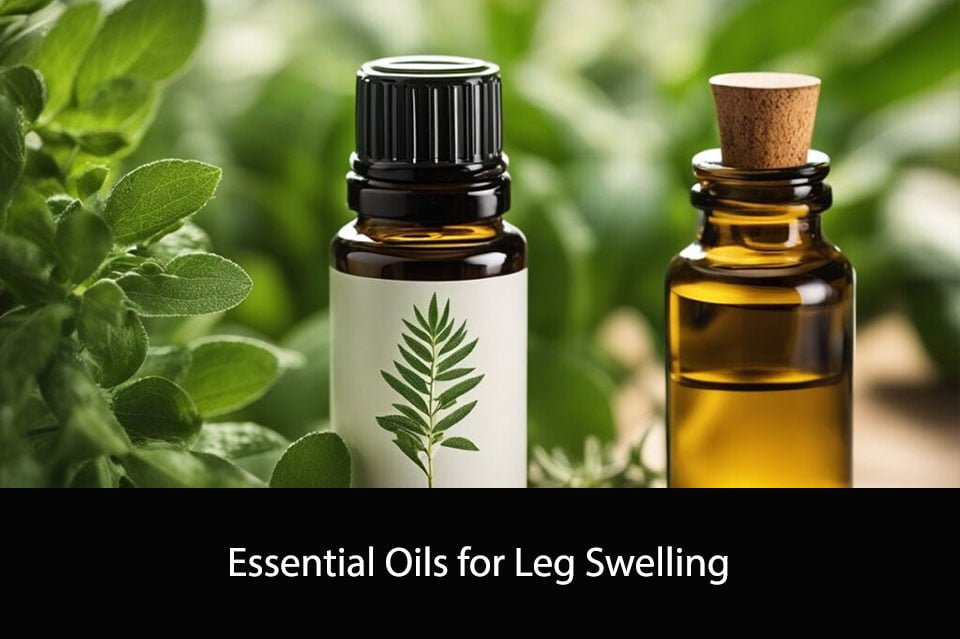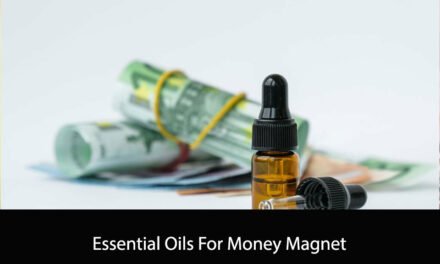Essential oils have been used for centuries to alleviate various health conditions, including swelling in the legs. Leg swelling, also known as edema, is a common condition that can be caused by a variety of factors, such as pregnancy, obesity, or injury. While there are many conventional treatments available, such as compression stockings or diuretics, some people prefer to use natural remedies like essential oils.
Essential oils are concentrated plant extracts that are known for their therapeutic properties. They can be used topically, inhaled, or ingested, depending on the oil and the condition being treated. When it comes to leg swelling, certain essential oils have anti-inflammatory and diuretic properties that can help reduce swelling and improve circulation. In this article, we will explore some of the best essential oils for leg swelling and how to use them safely and effectively.
Understanding Leg Swelling
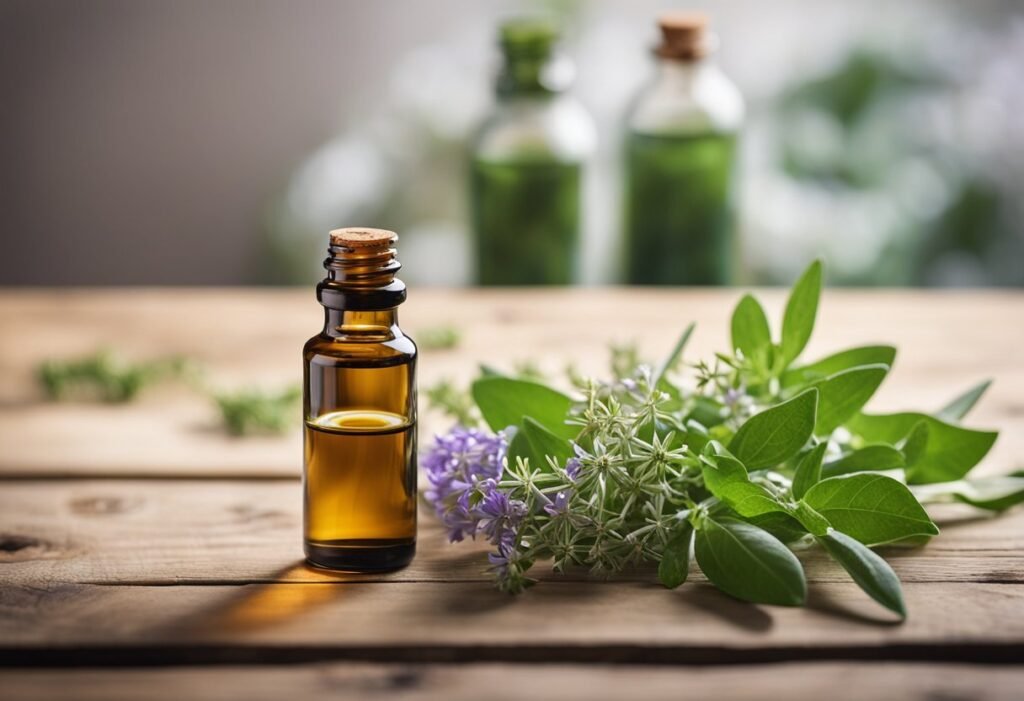
Leg swelling, also known as edema, is a common condition that affects many people. It occurs when excess fluid accumulates in the tissues of the legs, causing them to become swollen and puffy. In this section, we will discuss the causes of leg swelling and the risks associated with this condition.
Causes of Leg Swelling
There are many different factors that can contribute to leg swelling. Some of the most common causes include:
- Prolonged standing or sitting: When you stand or sit for long periods of time, the blood in your legs can pool and cause swelling.
- Injury: If you injure your leg, such as by spraining your ankle or breaking a bone, it can lead to swelling.
- Pregnancy: Pregnant women often experience leg swelling due to changes in their hormones and increased pressure on their blood vessels.
- Medical conditions: Certain medical conditions, such as heart failure, kidney disease, and liver disease, can cause leg swelling.
Risks Associated with Leg Swelling
While leg swelling is often a harmless condition, it can be a sign of more serious health problems. Some of the risks associated with leg swelling include:
- Blood clots: When blood flow is restricted in the legs, it can lead to the formation of blood clots, which can be life-threatening.
- Skin infections: When the skin on your legs is stretched and swollen, it can become more vulnerable to infections.
- Reduced mobility: If your legs are swollen, it can be difficult to move around, which can lead to reduced mobility and a decreased quality of life.
In conclusion, leg swelling is a common condition that can be caused by a variety of factors. It is important to understand the causes and risks associated with this condition in order to prevent complications and maintain good health.
Essential Oils Overview
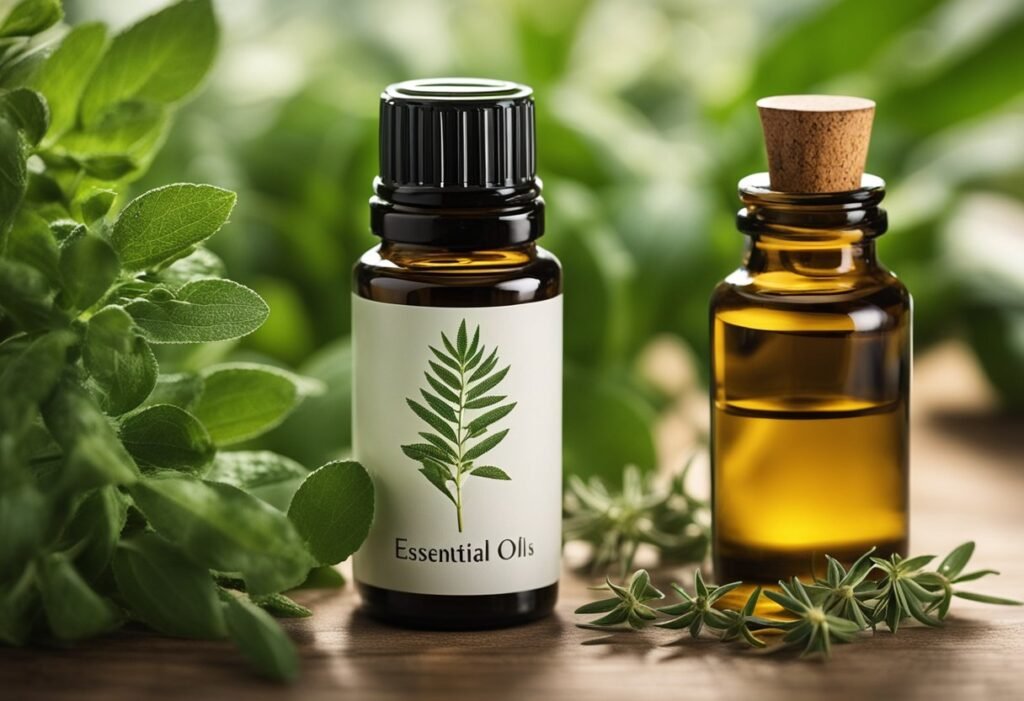
Benefits of Essential Oils
Essential oils have been used for centuries to treat a variety of ailments, including leg swelling. These oils are highly concentrated plant extracts that are extracted from various parts of plants, such as leaves, flowers, and roots. They are known for their therapeutic properties and can be used to alleviate pain, reduce inflammation, and promote relaxation.
When it comes to leg swelling, essential oils can help improve circulation, reduce inflammation, and ease discomfort. Some of the most effective essential oils for leg swelling include:
- Peppermint oil: Known for its cooling and soothing properties, peppermint oil can help reduce inflammation and ease discomfort.
- Lavender oil: This oil is known for its calming properties and can help reduce stress and anxiety, which can contribute to leg swelling.
- Eucalyptus oil: This oil has anti-inflammatory properties and can help improve circulation, which can reduce swelling in the legs.
How Essential Oils Work
Essential oils work by stimulating the olfactory system, which is connected to the brain. When we inhale essential oils, the molecules enter the body and interact with the limbic system, which is responsible for regulating emotions and other physiological functions.
In addition to their effects on the olfactory system, essential oils can also be absorbed through the skin. When applied topically, the oils penetrate the skin and enter the bloodstream, where they can be transported to different parts of the body.
Overall, essential oils can be a safe and effective way to alleviate leg swelling. However, it’s important to use them properly and in conjunction with other treatments, such as compression stockings and exercise. It’s also important to consult with a healthcare provider before using essential oils, especially if you have any underlying health conditions or are pregnant or breastfeeding.
Best Essential Oils for Leg Swelling
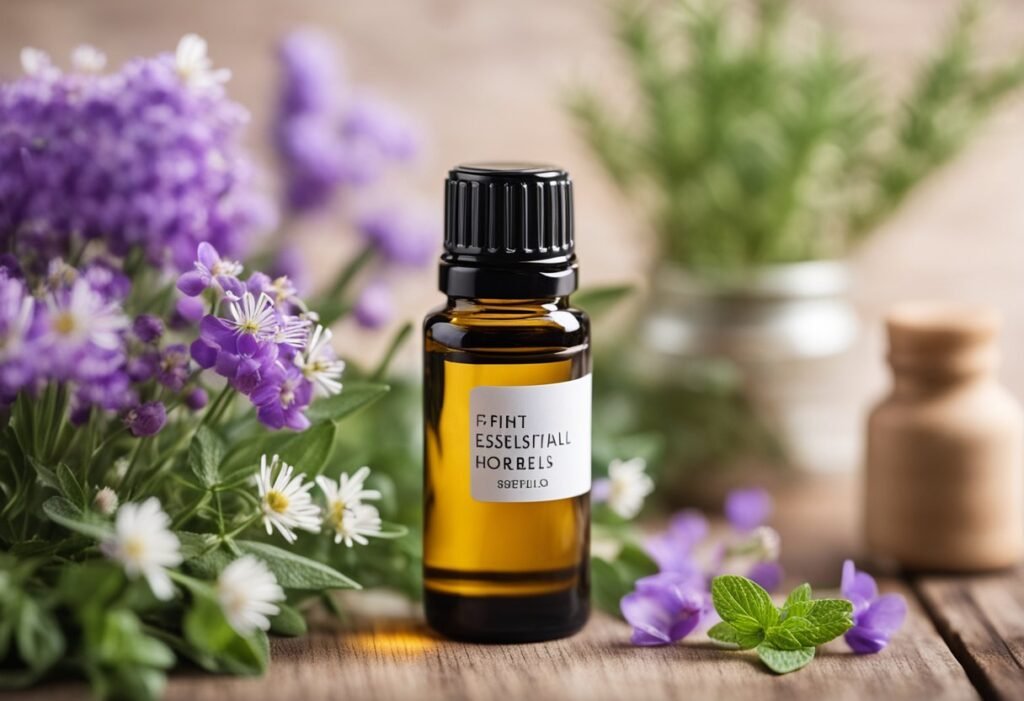
When it comes to reducing leg swelling, essential oils can be a natural and effective solution. Here are some of the best essential oils for leg swelling:
Lavender Oil
Lavender oil has anti-inflammatory properties that can help reduce swelling and promote relaxation. It can also improve circulation and reduce pain. To use lavender oil, mix a few drops with a carrier oil, such as coconut oil, and massage onto the affected area.
Tea Tree Oil
Tea tree oil has anti-inflammatory and antimicrobial properties that can help reduce swelling and prevent infection. It can also improve circulation and reduce pain. To use tea tree oil, mix a few drops with a carrier oil and massage onto the affected area.
Peppermint Oil
Peppermint oil has cooling and anti-inflammatory properties that can help reduce swelling and relieve pain. It can also improve circulation. To use peppermint oil, mix a few drops with a carrier oil and massage onto the affected area.
Eucalyptus Oil
Eucalyptus oil has anti-inflammatory and analgesic properties that can help reduce swelling and relieve pain. It can also improve circulation. To use eucalyptus oil, mix a few drops with a carrier oil and massage onto the affected area.
Chamomile Oil
Chamomile oil has anti-inflammatory and analgesic properties that can help reduce swelling and relieve pain. It can also promote relaxation. To use chamomile oil, mix a few drops with a carrier oil and massage onto the affected area.
Overall, essential oils can be a natural and effective way to reduce leg swelling. However, it’s important to use them properly and consult with a healthcare provider if you have any underlying medical conditions.
Application Methods
Topical Application
One of the most common ways to apply essential oils for leg swelling is through topical application. We recommend diluting the essential oil with a carrier oil, such as coconut or jojoba oil, before applying it to the affected area. This helps to reduce the risk of skin irritation and ensures that the essential oil is properly absorbed.
To apply the oil, we suggest mixing 2-3 drops of essential oil with 1 tablespoon of carrier oil. Gently massage the mixture onto the affected area, using circular motions to help improve circulation and reduce swelling. Repeat this process 2-3 times per day as needed.
Compression Soaks
Another effective way to use essential oils for leg swelling is through compression soaks. This method involves soaking a cloth or towel in a warm water and essential oil mixture, and then wrapping it around the affected area.
To prepare the soak, we recommend mixing 5-10 drops of essential oil with 1 cup of warm water. Soak a cloth or towel in the mixture, wring out the excess liquid, and then wrap it around the affected area. Cover the compress with a plastic wrap or towel to keep it in place, and leave it on for 20-30 minutes. Repeat this process 2-3 times per day as needed.
Aromatherapy
Aromatherapy is another way to use essential oils for leg swelling. This method involves diffusing essential oils into the air, which allows you to inhale their therapeutic properties.
To use aromatherapy for leg swelling, we recommend using a diffuser to disperse the essential oil into the air. We suggest using 5-10 drops of essential oil in the diffuser, and running it for 20-30 minutes at a time. You can repeat this process 2-3 times per day as needed.
Overall, these application methods can be effective in reducing leg swelling when used correctly. However, it is important to remember that essential oils should not be used as a replacement for medical treatment, and you should always consult with a healthcare professional before using them.
Safety and Precautions
When using essential oils for leg swelling, it is important to take certain safety precautions to avoid any potential adverse reactions. Here are some things to keep in mind:
Skin Sensitivity and Allergies
Before using any essential oil, it is important to perform a patch test to check for any potential skin sensitivity or allergies. Dilute the essential oil in a carrier oil, such as coconut or jojoba oil, and apply a small amount to the inside of your wrist. Wait 24 hours to see if any redness, itching, or swelling occurs. If you experience any of these symptoms, do not use the essential oil.
Proper Dilution
Essential oils are highly concentrated and should always be diluted before use. Improper dilution can cause skin irritation or other adverse reactions. A general rule of thumb is to use no more than 3-5 drops of essential oil per 1 ounce of carrier oil. Always follow the recommended dilution guidelines for each individual essential oil.
Pregnancy and Nursing Considerations
It is important to exercise caution when using essential oils during pregnancy and while nursing. Some essential oils may be harmful to the developing fetus or newborn. Consult with a healthcare provider before using any essential oils during pregnancy or while nursing. Additionally, it is recommended to avoid the use of essential oils during the first trimester of pregnancy.
By following these safety precautions, you can safely incorporate essential oils into your leg swelling treatment regimen. Remember to always use high-quality, pure essential oils from reputable sources, and never ingest essential oils without the guidance of a healthcare professional.
Integrating Essential Oils into Your Routine
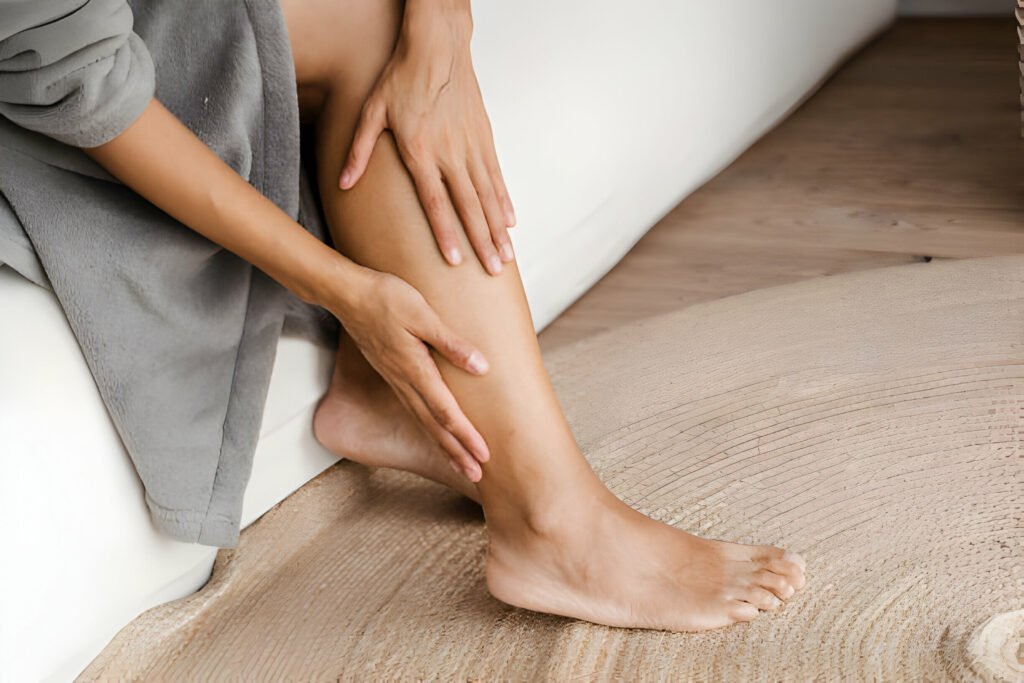
If you’re looking to manage leg swelling with essential oils, it’s important to know how to incorporate them into your daily routine. Here are some tips on how to do so effectively.
Daily Swelling Management
One way to use essential oils for leg swelling is to add a few drops to a carrier oil and massage the affected area. This can help promote circulation and reduce inflammation. Some good carrier oils to use include coconut oil, jojoba oil, and almond oil.
Another option is to add essential oils to a warm bath and soak for 20-30 minutes. This can help relax the muscles and reduce swelling. Some good essential oils to use in a bath include lavender, peppermint, and eucalyptus.
Lifestyle Considerations
In addition to using essential oils, there are some lifestyle changes you can make to help manage leg swelling. One important factor is staying hydrated. Drinking plenty of water can help flush out excess fluid and reduce swelling.
Another lifestyle consideration is exercise. Regular physical activity can help improve circulation and reduce swelling. Low-impact exercises like walking, swimming, and yoga are good options.
In conclusion, integrating essential oils into your routine can be a helpful way to manage leg swelling. By using them in combination with lifestyle changes like staying hydrated and exercising regularly, you can take steps towards reducing swelling and improving overall leg health.
Professional Guidance
When it comes to using essential oils for leg swelling, it is important to seek professional guidance. Here are some key points to keep in mind:
When to See a Doctor
If you are experiencing severe or persistent swelling in your legs, it is important to see a doctor to rule out any underlying medical conditions. Some conditions that can cause leg swelling include heart failure, kidney disease, and liver disease. A doctor can perform a physical exam and recommend appropriate treatment options.
Working with Aromatherapists
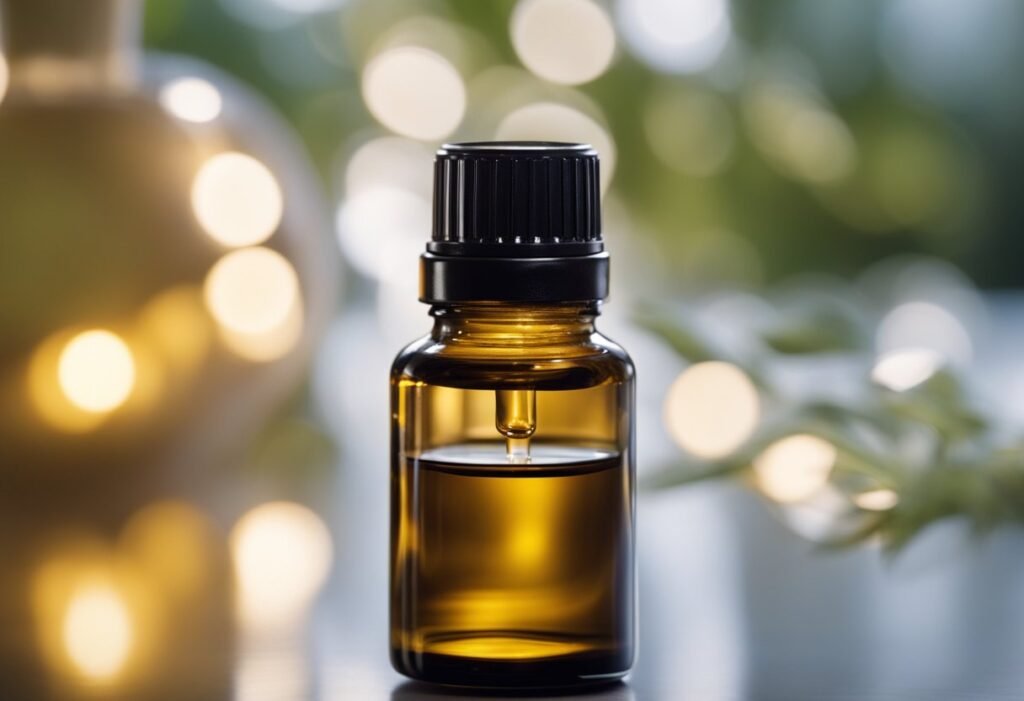
If you decide to use essential oils for leg swelling, it is important to work with a qualified aromatherapist. Aromatherapists are trained professionals who can help you choose the right oils and use them safely and effectively.
When working with an aromatherapist, be sure to discuss any medical conditions or medications you are taking. Some essential oils can interact with medications or exacerbate certain medical conditions.
Overall, seeking professional guidance is essential when using essential oils for leg swelling. With the right guidance, you can use these oils safely and effectively to help alleviate swelling and promote overall wellness.
Frequently Asked Questions
What essential oils are recommended for reducing swelling in the feet?
We recommend using essential oils such as peppermint, eucalyptus, ginger, and cypress to reduce swelling in the feet. These oils have anti-inflammatory properties that help to reduce swelling and improve circulation.
Can you provide a recipe using essential oils to alleviate edema?
Yes, we recommend mixing 3-4 drops of peppermint oil, 2-3 drops of eucalyptus oil, and 2-3 drops of ginger oil with a carrier oil such as coconut oil or almond oil. Massage the mixture onto the affected area in circular motions to help reduce swelling and improve circulation.
How should essential oils be applied to address water retention in the body?
Essential oils can be applied topically or used in a diffuser to help address water retention in the body. When applying topically, it is recommended to dilute the essential oil with a carrier oil and massage onto the affected area. When using a diffuser, add a few drops of essential oil to the diffuser and allow the aroma to circulate in the air.
Which essential oil is most effective for managing symptoms of edema?
Peppermint oil is considered to be the most effective essential oil for managing symptoms of edema. It has anti-inflammatory properties that help to reduce swelling and improve circulation.
What are the best practices for using essential oils from Young Living or doTERRA for swollen feet?
When using essential oils from Young Living or doTERRA for swollen feet, it is important to dilute the oil with a carrier oil and apply topically. It is also important to follow the recommended usage guidelines provided by the manufacturer.
Are there any herbal or essential oil remedies for improving leg circulation and reducing fluid buildup?
Yes, some herbal and essential oil remedies for improving leg circulation and reducing fluid buildup include horse chestnut, ginger, cypress, and peppermint oil. These remedies have anti-inflammatory properties that help to improve circulation and reduce swelling. However, it is important to consult with a healthcare professional before using any herbal or essential oil remedies.

